Child's Play
Family Photographic Services
Digital Postprocessing Techniques
Should we manipulate the images after they are taken?
- Damian Harty, Photographer
- Just because we can doesn't mean we must
- Various things are possible
- Everyone has their own preferences
Child's Play uses digital techniques for delivering great images, whether by scanning traditional 35 mm negatives for 22 megapixel images or by using a state-of-the art digital SLR giving 10 megapixels at low noise levels[1]. The choice between film and digital is largely an artistic one, using common lighting equipment and lenses thanks to Nikon's lasting quality.
Although many things are possible when manipulating images, Child's Play has carefully selected the following techniques for presenting images in the best possible way and achieving consistently high quality.
While manipulating the image is acceptable and desirable for presenting the best quality, Child's Play will not generally indulge in significant digital manipulation of images in the way that leading magazines often do - the underlying message that "you're not good enough as you are" does not sit well with us.
Natural Colour
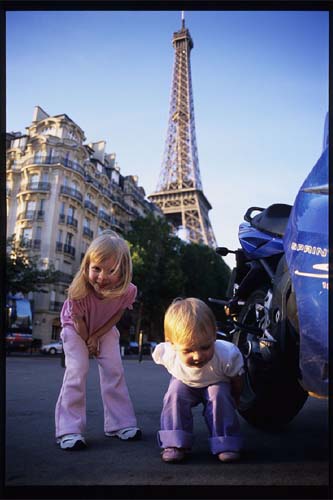
Some pictures just look great the way they are. This shot of Charlotte and Louise next to my motorcycle in Paris doesn't need any tomfoolery. It was taken on Fuji Velvia 100F professional film with a 28 mm focal length in fabulous evening light after a very hot and lengthy fight with Paris traffic; the girls (and Mum) were in an air-conditioned car and were nothing like as dishevelled as the photographer. Film shots are easily recognisable by their distinctive texture; when the full frame image is taken straight from the scanner it also has a black (and slightly irregular) border.
When natural colour works, there is no substitute for it. With richly coloured clothing like ball gowns and high fashion items, natural colour is the right choice. For early evening light in Paris, nothing beats it.
Pure Black & White
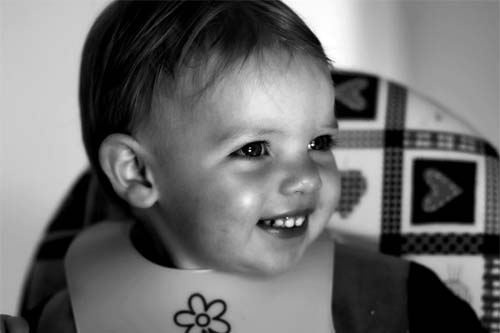
A punchy, high contrast image in pure Black & White is hard to beat for sheer artistic clarity. It also removes distracting colours - the pink bib, the red sleeves and the varied colours on the high chair all removed the impact of Louise's vibrant smile, captured with a 50 mm lens on a digital SLR for an effective focal length of 75 mm. Black and White is hugely useful for retrieving breathtaking images from improvised surroundings, emphasising texture and composition as it does so.
Cross-Processed

When pictures are taken on slide film, the chemistry for processing them is different to normal ("negative") film. If slide film is processed in the wrong chemicals, a distinctive "high-colour" look results. This digital technique recreates that look and is a favourite with some photography studios.
Chris and her Dad stood shoulder-to-shoulder in the studio with a white backdrop looking into a 44mm lens on a digital SLR to give the start point for this highly colourful picture, emphasising tone and eye colour.
Not to everyone's taste, this is a vivid, "super-real" look
While not a substitute for good photography, when well chosen it can give a vibrant edge to studio photographs.
Blue & White
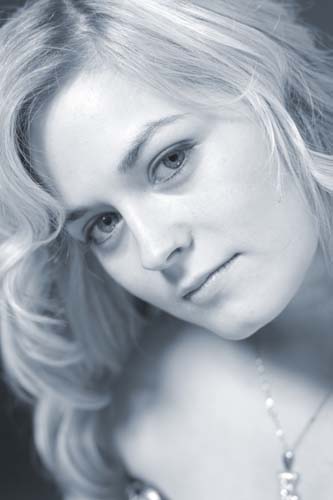
A variation on traditional black and white is the introduction of a coloured tint to a monochrome image. Older chemistry produced images that had a distinctive golden tone known as "Sepia" that mellowed with age and this is still a popular treatment today.
Child's Play prefers something fresher and more modern than the traditional Sepia and has adopted a cooling blue tint for maximising the impact of monochrome images. Carefully chosen to look properly black under artificial light and reveal its colour only in daylight, this tint gives an image that constantly changes and encourages repeated viewing. In conjunction with a wide aperture and slight over-exposure, the picture has a light, airy feel that shows Emma's eyes and skin to perfection.
Infra-Red Look Black and White
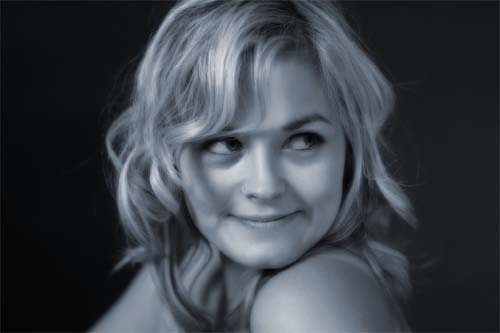
Infra-red film is not sensitive to visible light and is known for the luminous quality of the images it produces. Careful use of digital techniques gives a similar feel but without the tonal distortions of actual infra-red film.
The rich glow is perfect for showing Emma's excellent skin without losing the fine detail of her hair as it falls near her eyes. Despite being taken only moments after the picture above, the sumptious texture gives a very different feel.
1970's Look

Kodachrome was the original colour chemistry and is still regarded as the definitive archival quality medium. Real Kodachrome needs to be sent to Switzerland for processing. It has excellent tonal range and good neutral colour rendition and has done since 1935. Despite that, a golden tone and reduced tonal range is often used by film-makers to evoke the 1970's.
This process is rather an exaggeration of that look with a strong golden tone, as can be seen on Toby's white t-shirt, but still capturing the hues of the original colours - in this case the jaunty stripes on Toby's t-shirt. Child's Play also uses a diffusion technique similar to the infra-red look black and white, described above, with this colour treatment.
Selective Desaturation
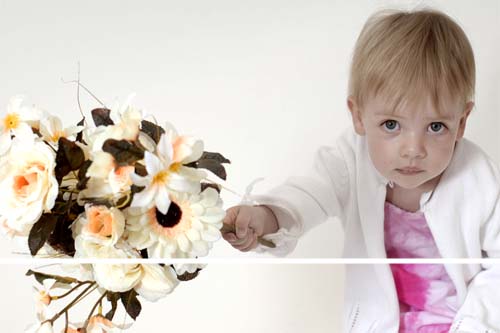
Louise's beautiful expression was a little overshadowed by the vivid pink dress tones, as can be seen from the area below the white bar in the image. Desaturating the picture in the area above the white bar (making it more towards black and white) has helped remove the distraction but if applied to the whole image leaves it looking a little flat. By selecting areas to leave with their natural colour (the flowers and Louise's eyes) the picture loses little of its impact while lessening some of the distractions.
Conclusions
- Just because we can doesn't mean we must
- Various things are possible
- Everyone has their own preferences
[1] See the accompanying note "Digital Photography" for a discussion of the meaning of these numbers. The basic principle is that "it's not the megapixels, it's the noise!"
© 2006 Damian Harty. Design by Andreas Viklund.